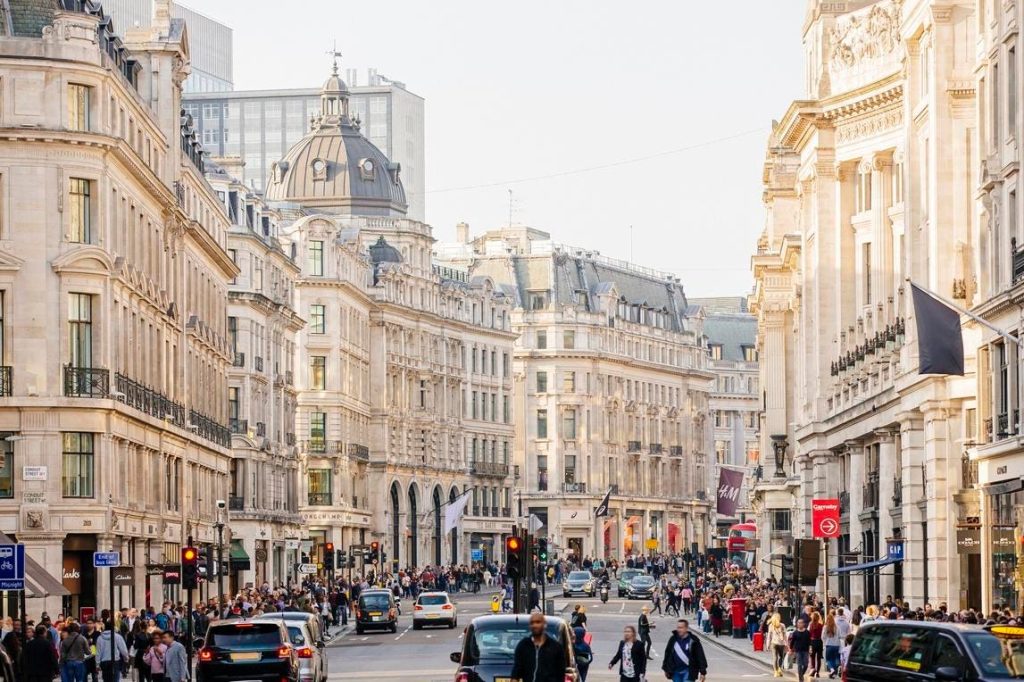Per Akerberg is CEO of customer experience cloud, Voyado.
Retail has long been associated with British culture—a reputation bolstered by the resurgence of the high street after the challenges of lockdown. If anything, lockdowns showed that people enjoy socializing and engaging with brands in physical spaces, and I think that’s unlikely to ever change.
Yet, the pandemic dramatically altered consumer preferences, and retailers must devise novel ways of building and retaining consumer loyalty in the metaverse era. In this rapidly evolving landscape, some businesses swiftly adapt to changing consumer needs. Others are struggling to align themselves with these new, dynamic preferences.
A case in point is the once bustling Oxford Street, which has witnessed a decline in popularity, sparking legitimate concerns. Its current state is no longer befitting its status as a prominent retail destination, even though it still experiences a lot of footfall. Still, other retail areas in London are flourishing, meaning there are plenty of opportunities for the high streets to remain viable and avoid becoming relics of the past.
Failing to improve the current state of Oxford Street could potentially drive high-end retailers to seek alternative “prime” locations, as it can affect their brand perception. However, this doesn’t have to be the fate of every retailer on the high street—I believe those who successfully merge offline and online shopping will thrive, regardless of location.
Recognize the importance of in-store experiences.
Selecting the right products to stock is a crucial aspect of retail strategy. Many brands nowadays opt to stock only a limited selection of their inventory in physical stores, which can frustrate brand loyalists when they can’t find their preferred products.
Retailers need to capitalize on opportunities to showcase products for their brand advocates. They must adopt a broader perspective when considering the use of their physical spaces. Purchases may not always occur in-store, but if retailers can integrate online and offline interactions seamlessly, they can better understand the customer journey.
Creating a compelling in-store experience is about understanding your target audience and crafting a customer journey for them. Begin by designing a store layout that is easy to navigate and visually appealing; most important, however, is having a store that can capture customer data.
This data allows you to hyper-personalize the customer experience. For example, shops can use this data to provide a curated selection of products for a customer’s individual taste. I’ve found that tailoring the consumer journey in this way can boost loyalty, repeat purchasing, and sales, as well as leading to improved customer data and an overall competitive advantage.
Integrate online and high street retail.
To effectively bridge the physical and digital divide, retailers must integrate online and offline interactions. Leverage data analytics to gain insights into customer journeys and preferences. And incorporate in-store experiences into customer relationship management (CRM) systems, ensuring a comprehensive understanding of customer interactions.
You can establish a holistic customer perspective by incorporating online and offline orders and interactions. Many point-of-sale vendors are adept at bringing an online experience in-store, and retailers should capitalize on this capability by reconciling those records.
Becoming “phygital” should be a paramount objective for high street retailers. Embracing such an approach effectively combines the finest attributes of online and in-store shopping experiences and enables consumers to enjoy the best of both. This multifaceted strategy holds the potential to redefine the retail landscape and take customer engagement to new heights.
This involves leveraging technologies to bridge the gap between online and offline environments and enhancing interactions to be more engaging and personalized. To create a phygital experience, firstly, aim to understand your customer’s journey across all touchpoints—online, mobile and in-store—and then identify potential integration points. Consider where digital tools could enhance the physical shopping experience and vice versa.
Leverage data and customer insights.
The significance of data in enhancing the customer experience cannot be overstated. It forms the foundation on which to build improvements to customer experiences and the fulfillment of their needs.
Customers should be treated as a unified entity, irrespective of their chosen shopping channel. Understanding their collective value and treating them as integral components of the same customer journey is crucial to maintaining a consistent yet personalized customer experience.
The initial step involves gaining insights into customers’ shopping habits and understanding their unique segments. Distinguish the value that different types of shoppers, online, in-store or omnichannel, bring to the business. Evaluating how effectively online teams drive customers to physical stores and vice versa is important.
This can be done via online surveys, which can provide immediate insights into the effectiveness of the digital-to-physical strategy and what could be done to improve it; social media analytics, which, although indirect, can provide demographic data, helping brands understand what audience posts are resonating with. Additionally, by tracking data such as referral sources or the use of online promotion codes in-store, you get tangible proof of your online efforts leading to in-person visits.
Integrating these elements can improve business efficiency. The better retailers can assess individual store performance and evaluate the impact of e-commerce and digital teams, the more effectively they can enhance customer lifetime value. An upsurge in customer lifetime value signifies a successful customer experience.
Conversely, when sales are mounting but customer lifetime value is declining or stagnant, it signals competence in acquisition and conversion but not retaining—a costly way of doing business.
Commit to improving the high street’s future.
Despite the hype around the metaverse, its potential may hinge on its ability to align with consumer preferences. I think consumers will always shop online for products they don’t feel strongly attached to, such as fast fashion, yet high street shopping maintains its relevance for more thoughtful purchases. People want to feel the fabric, engage with the brand and ensure a proper fit.
The allure of in-store shopping is that it provides an exciting experience, and the high street carries a distinctive vibrancy that many shoppers find appealing. Sustaining this vitality requires a commitment to accommodating legitimate businesses and retailers. This entails not only space utilization that provides value to consumers but also enhancing its aesthetic appeal.
Forbes Business Council is the foremost growth and networking organization for business owners and leaders. Do I qualify?
Read the full article here










